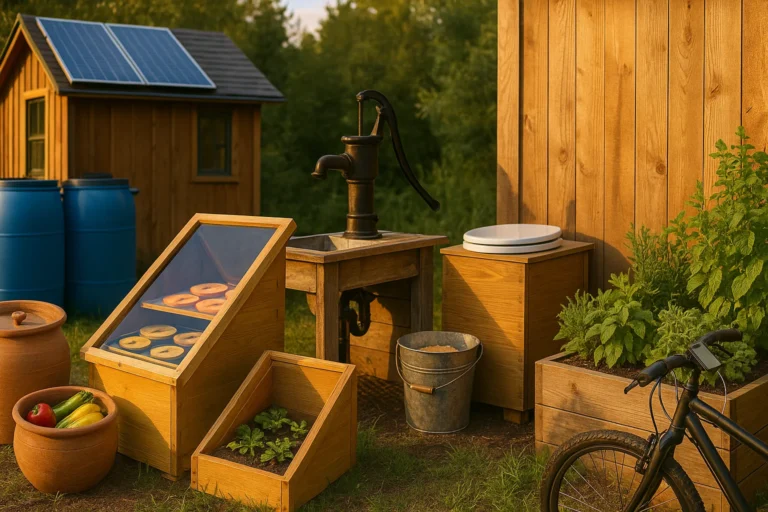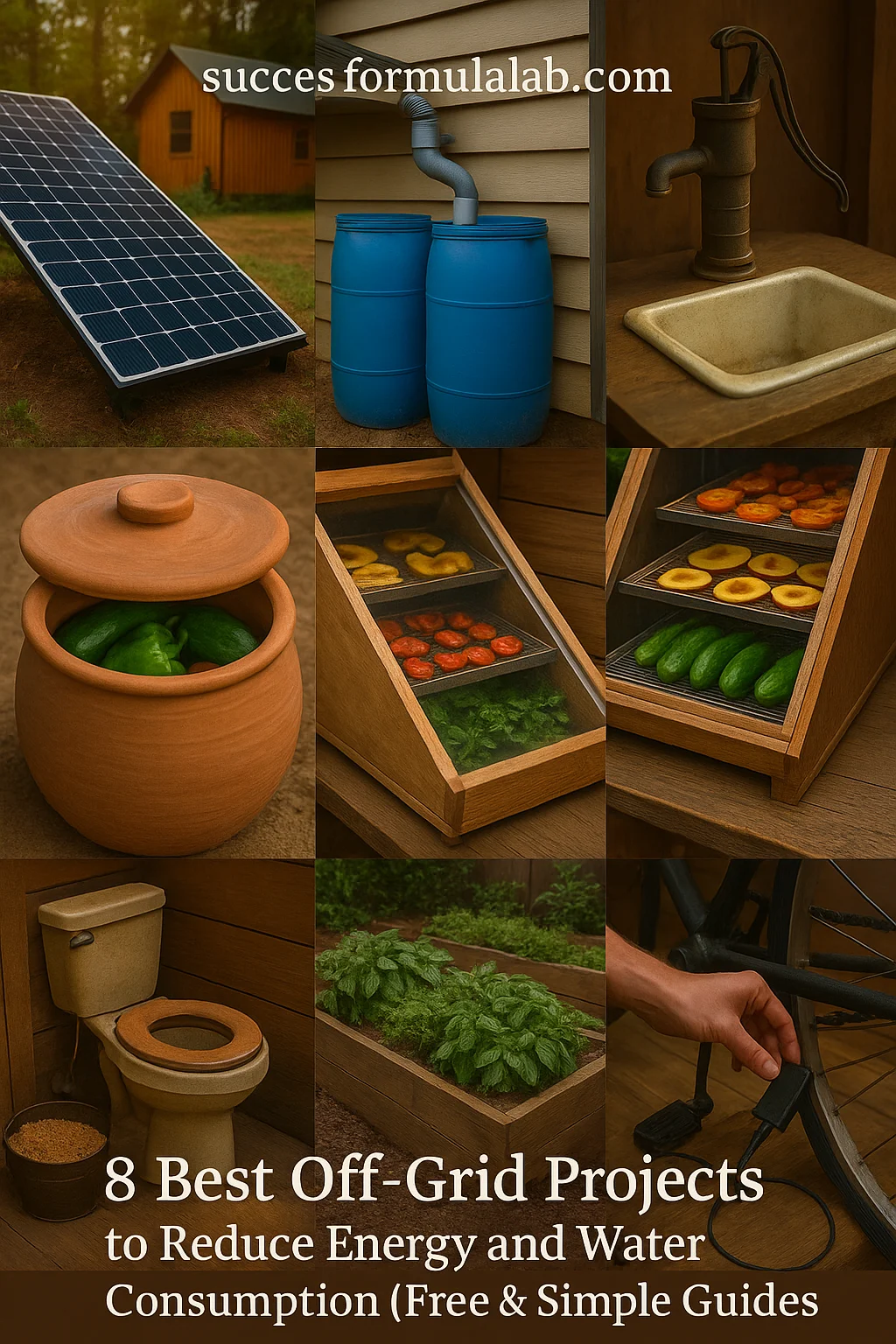
1️⃣ Solar Power Systems: Your First Step Toward True Energy Independence
You don’t need to build a massive solar farm to enjoy renewable power. A simple starter kit can light your shed, run tools, or charge devices. Solar is one of the easiest off-grid projects to learn — modular, scalable, and safe to experiment with.
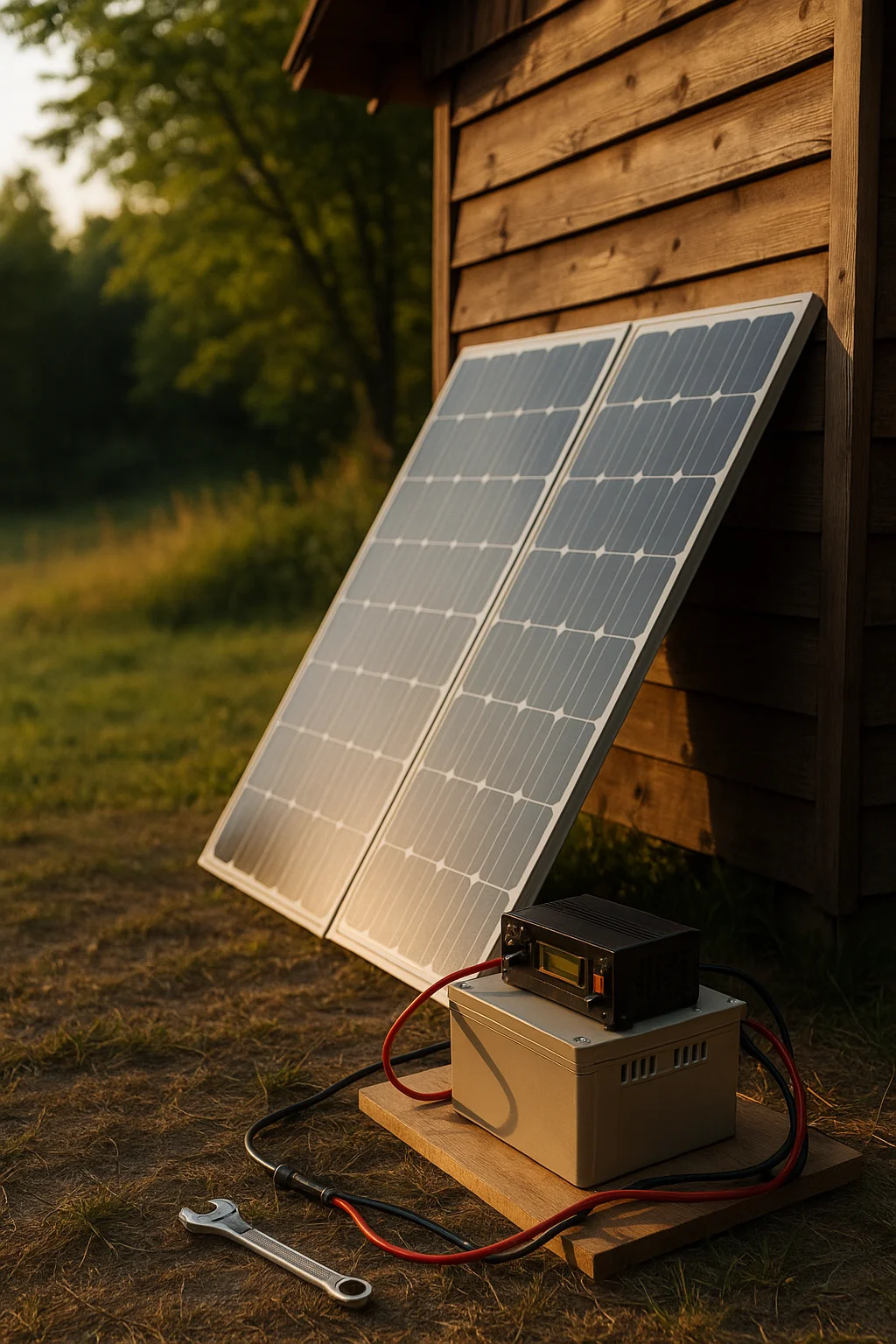
Simple Off-Grid Solar Project for Beginners
- Pick a 100-watt monocrystalline panel and a 12V battery.
- Add a charge controller (MPPT type) and a 1000W inverter.
- Mount panels facing south and keep wiring short for efficiency.
- Use a fuse between components for safety.
Example Solar Setup
| Component | Description | Estimated Cost |
|---|---|---|
| Solar Panel | 100W monocrystalline | $100 |
| Battery | 12V 100Ah Deep Cycle | $120 |
| Charge Controller | 30A MPPT | $40 |
| Inverter | 1000W Pure Sine | $80 |
As you expand, you’ll quickly notice how freeing it feels to power everyday life from sunlight alone. Once you’ve built your confidence, a guide like The Self-Sufficient Backyard can help you scale up safely and efficiently.
2️⃣ Rainwater Harvesting System: Simple Water Independence
Water security is the next logical step. Collecting rainwater ensures that even during shortages, you’ll have a reliable supply for drinking, gardening, or cleaning. A basic barrel system is easy to assemble in one weekend.
Beginner Off-Grid Water Collection Project
- Install gutters that direct rainwater into a barrel.
- Add a diverter and mesh filter to remove debris.
- Use a spigot near the bottom for gravity-fed flow.
- Keep lids sealed to stop mosquitoes.
Three-Barrel Setup (Approx. 250-Gallon Capacity)
| Material | Quantity | Cost |
|---|---|---|
| 55-Gallon Barrel | 3 | $60 |
| Diverter Kit | 1 | $25 |
| Mesh Filter | 3 | $12 |
| Spigot | 3 | $9 |
If you want to take water independence further, look into The AquaTower. This innovative system shows how to generate pure, drinkable water even when rainfall is scarce — a life-changing upgrade for any off-grid property.
3️⃣ DIY Solar Water Heater
Hot water without electricity? Absolutely. By using dark tubing and transparent covers, you can capture solar heat for showers and cleaning. It’s efficient, inexpensive, and perfect for moderate climates.
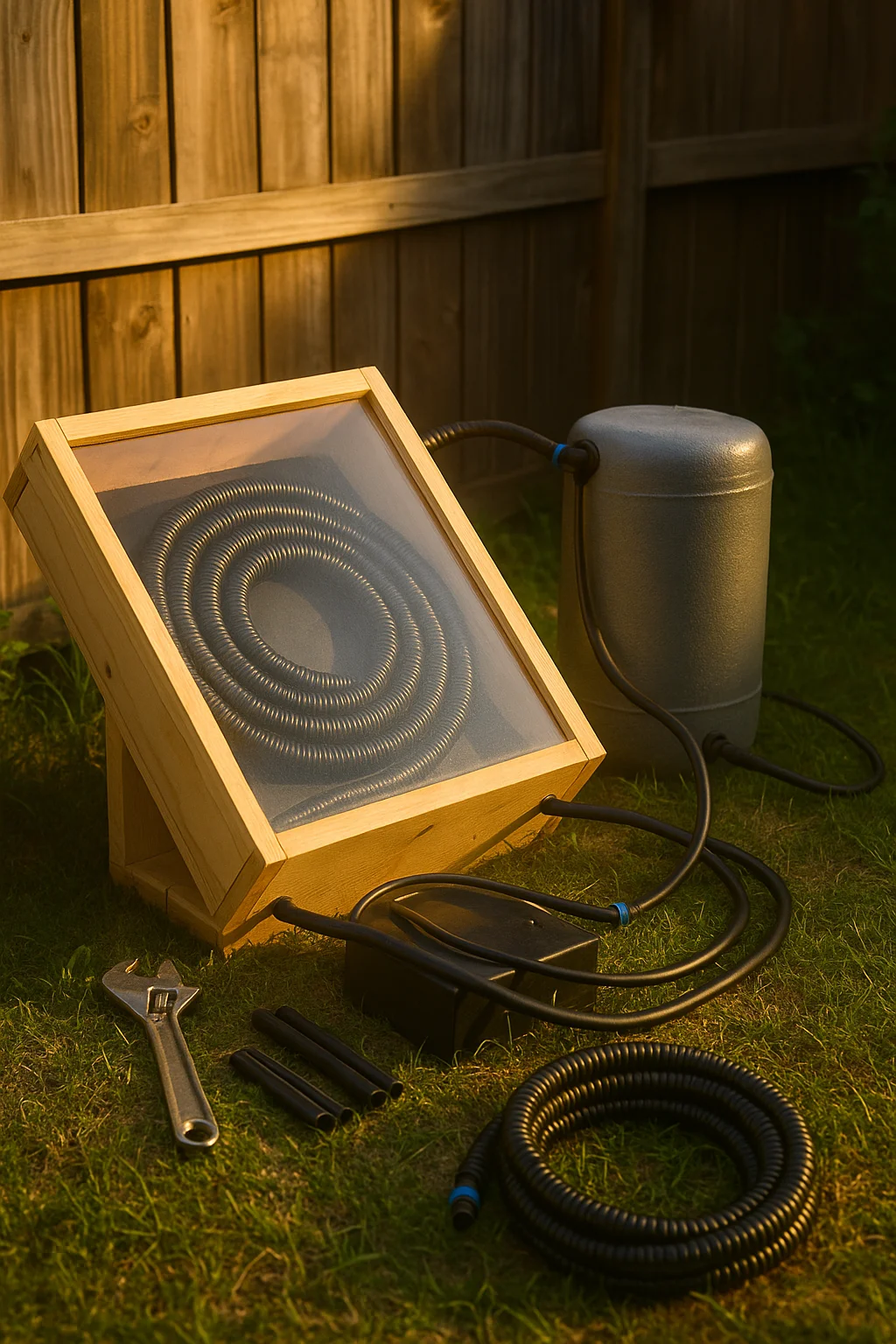
How to Build It
- Coil 100 feet of black PEX pipe inside a shallow wooden box.
- Paint the inside black and cover it with clear polycarbonate sheet.
- Connect to a small insulated storage tank.
- Mount on a south-facing wall or rooftop.
This setup can cut propane or electric water-heating costs by 40–50%. Add a temperature relief valve for safety, and enjoy the satisfaction of a shower heated entirely by sunlight.
4️⃣ Greywater Recycling System
Instead of wasting water from sinks or showers, you can filter and reuse it for irrigation. It’s one of the smartest off-grid projects to conserve water year-round.
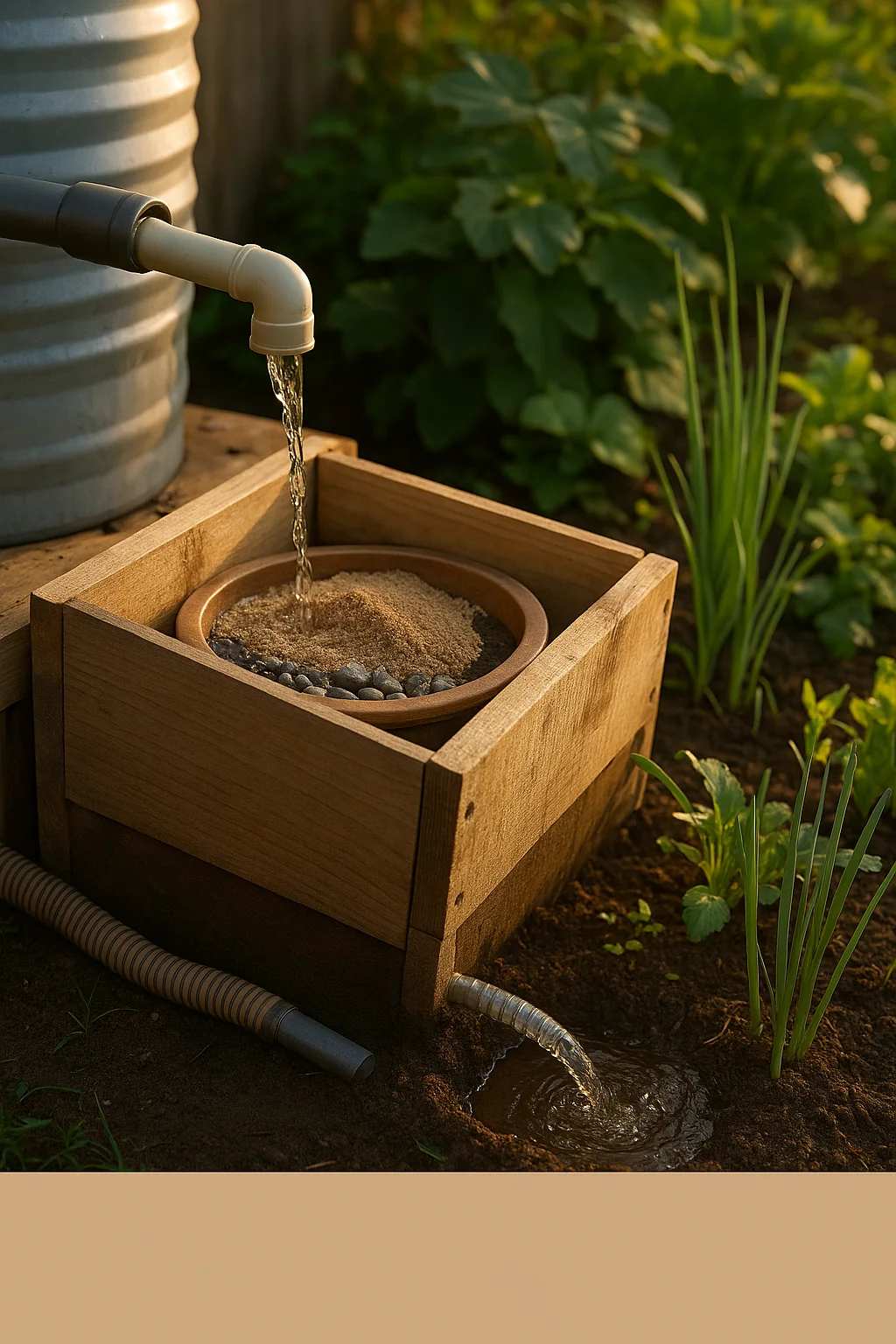
Safe Greywater Filtering (Beginner Friendly)
- Route the drain line to an outdoor sand-and-gravel filter box.
- Plant reeds or cattails to absorb nutrients naturally.
- Use biodegradable soaps to prevent soil damage.
Always mark irrigation lines clearly so greywater never enters drinking supplies. With a small investment, you’ll reduce water waste dramatically and create a greener landscape.
5️⃣ Hand-Crank and Pedal Power Generators
Imagine charging your phone or powering a radio just by pedaling for a few minutes. Human-powered energy is reliable, educational, and surprisingly fun. It’s an ideal weekend project for families or classrooms learning about self-reliance.
If mechanical builds fascinate you, check out The Lost Generator. This resource teaches step-by-step ways to build compact backup power systems that keep essential electronics running when the grid is down.
6️⃣ Solar Food Dehydrator & Canning Station
Preserving food is key to living sustainably. A solar dehydrator lets you dry fruits, herbs, and vegetables using only sunlight. Pair it with a simple canning setup and you’ll have a pantry ready for any season.
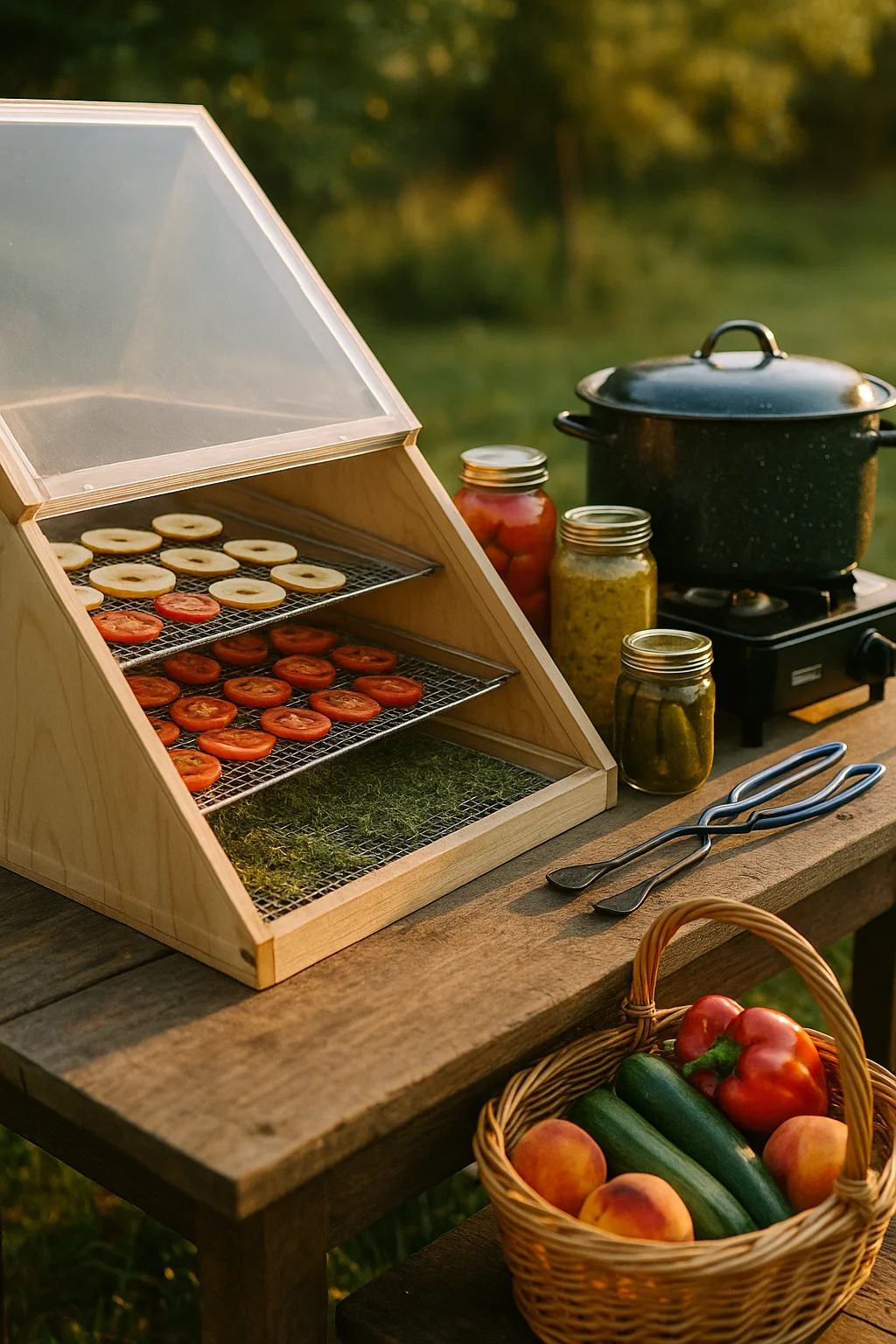
Simple Off-Grid Food Preservation Projects
- Build a wooden box with vents and a clear top panel.
- Add mesh trays to hold sliced produce.
- Position the dehydrator at a 30-40° tilt toward the sun.
- Rotate trays halfway through the drying cycle.
Sample Drying Chart
| Food | Slice Thickness | Time (hrs) | Notes |
|---|---|---|---|
| Apple | ¼ inch | 6–8 | Rotate trays halfway |
| Tomato | ½ inch | 10–12 | Add salt to prevent sticking |
When you start preserving your own harvest, you’ll see why off-grid living feels empowering. To expand your pantry even further, consider The Lost Superfoods — a collection of 300+ shelf-stable recipes and preservation methods tested to last for years without refrigeration.
7️⃣ Composting Toilet System
A composting toilet isn’t glamorous, but it’s incredibly practical. By separating waste and allowing aerobic bacteria to do their work, you can eliminate the need for water-flush systems and produce usable compost for trees and ornamentals.
- Build or buy a bucket-and-sawdust model.
- Line with biodegradable bags for easy cleanup.
- Store full containers in an outdoor compost bin for six months before use.
Beyond saving thousands of gallons of water each year, you’ll gain true independence from sewer or septic systems — one of the biggest steps toward off-grid freedom.
8️⃣ DIY Off-Grid Refrigerator Using Evaporative Cooling
Electricity isn’t always necessary to keep food cool. A “zeer pot” refrigerator uses two clay pots separated by wet sand. As the moisture evaporates, it draws heat away, dropping internal temperature by up to 10°C.
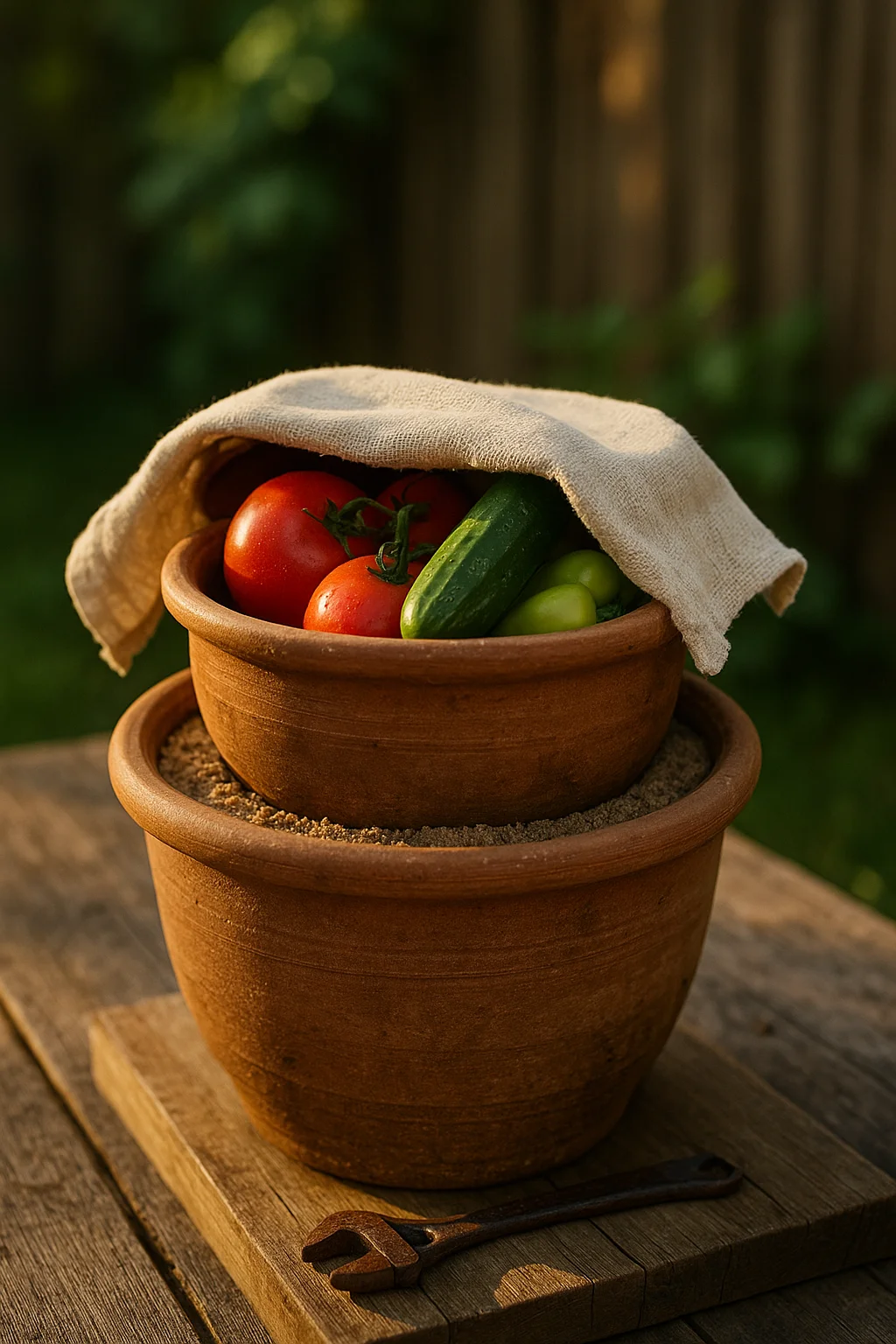
Build Steps
- Place a smaller clay pot inside a larger one, leaving a one-inch gap.
- Fill the gap with damp sand.
- Cover with a wet cloth and keep it in a breezy, shaded area.
This ancient technology still works perfectly today — ideal for vegetables, eggs, and dairy. It’s proof that sometimes the best off-grid projects rely on timeless wisdom, not modern gadgets.
Bonus: Free Off-Grid Project PDFs & Useful Books
- Free Off-Grid Projects for Beginners (PDF)
- No-Grid Survival Projects PDF Download
- Off-Grid Projects for Adults – Hands-On Edition
While you experiment with these ideas, don’t overlook natural health. Growing your own herbs means medicine is always within reach. The Medicinal Garden Kit gives you seeds and instructions to grow 10 healing plants right in your backyard — a perfect companion to your self-reliant lifestyle.
Conclusion: Build Your Own Energy-Free Future
Each project you start brings you closer to independence. You don’t need to move to the wilderness — you can begin wherever you are. Solar power, water collection, and simple tools already exist to give you freedom and peace of mind. The key is to take the first step and keep learning.
If you’re ready to design a home that truly works for you, explore The Self-Sufficient Backyard. It’s a complete, field-tested manual for off-grid energy, water, and food systems. Combine it with insights from successformulalab.com, and you’ll have every tool you need to thrive without depending on anyone else.
Frequently Asked Questions
What are the easiest off-grid projects for beginners?
Start with solar lights, rainwater barrels, and compost bins. They’re affordable, low-risk, and build the confidence you need to expand later.
Where can I find free off-grid project PDFs?
You can download free plans and checklists directly from successformulalab.com — updated regularly with new do-it-yourself resources.
How much can off-grid projects lower my bills?
Depending on your setup, you can cut monthly utility costs by 40–70% through renewable power, water reuse, and efficient food storage.
Are these projects safe for small properties or urban homes?
Yes. Most systems — like solar dehydrators or greywater filters — can fit into compact spaces and follow local building codes.
What’s the best off-grid project if I want a challenge?
Building a solar water heater or a small wind-solar hybrid generator offers hands-on experience and measurable savings.
Start your first project today — freedom begins the moment you build something that works without a plug.

